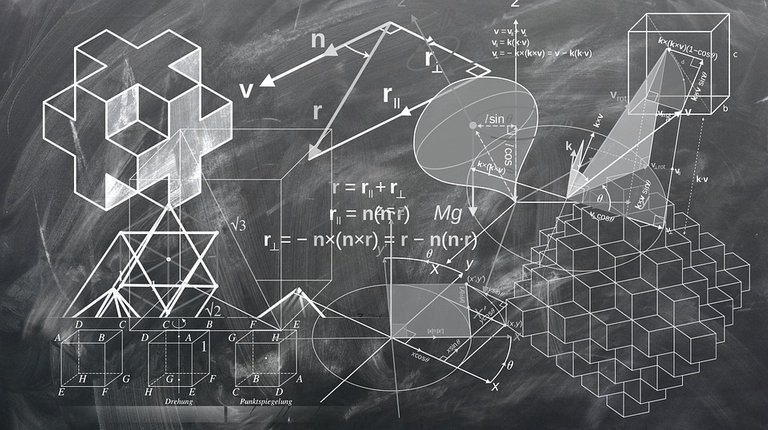Area Of Triangles
Hi there. This math post focuses on the area of a triangle. The contents of this post is for grades five to eight with the extension section more for high school students in grade nine.
Practice problems with answers are included.
Math text images rendered with QuickLaTeX.com.
The images in the first section found through DuckDuckGo Images.
The images that were poorly drawn are screenshots from drawing tools (Paint 3D & mathisfun.com Drawing App on the website).
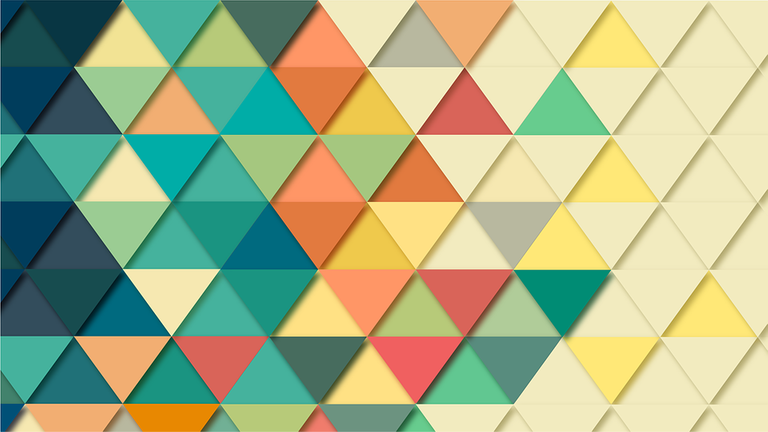
Topics
- Splitting the Square/Rectangle Into Two Triangles
- The Area Of A Triangle
- Extension - Using Pythagorean Theorem To Find Missing Sides
Splitting the Square/Rectangle/Parallelogram Into Two Triangles
Before getting into the area of the triangle, I want to go over the fact that two triangles can be formed from splitting the square, rectangle or parallelogram into two separate triangles.
Images From

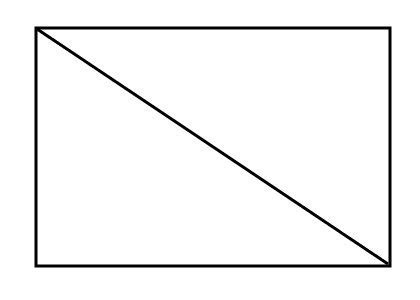
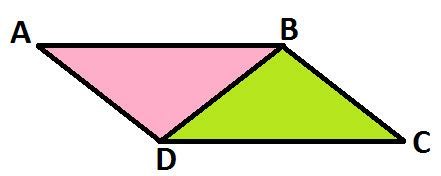
The Area Of A Triangle
For the area of squares, rectangles and parallelograms, it is the length of the base multiplied by the length of the height. Since one triangle is one half of a square/rectangle/parallelogram, the area of the triangle would be the length of the base multiplied by the height length divided by two.

Example
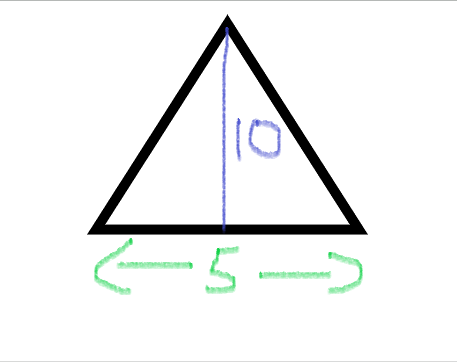
Given a base length of 5 centimetres and a height of 10 centimetres for a triangle, the area for this would be:

Practice Problems A
A triangle has a base length of 8 metres and a height that is 5 metres high. What is the area of this triangle?
A right angle triangle has a base length of 3 metres and a height of 5 metres. Determine the area of this triangle.
You are given an area of 100 square centimetres for a triangle and a height of 10 centimetres
for a triangle. What is the corresponding base length?
Answers To Practice Problems A
20 square metres
7.5 square metres
The formula for the area of the triangle is base multiplied by height divided by 2. So far you would have the Area of 100 equal to the base multiplied by the height of 10 centimetres divided by 2. Dividing the height of 10 by 2 gives five times the base. Solving for base involves dividing 100 by 5 to obtain 20 centimetres for the base length. (See steps below.)
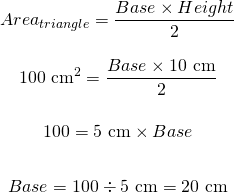
Extension - Using Pythagorean Theorem To Find Missing Sides
Some tougher variations of finding area of triangles include using the Pythagoras Theorem to find triangle heights. Do note that the Pythagoras Theorem is only applied to triangles with a right angle. Some answers for heights and/or areas may include square roots.
Do recall that the hypotenuse of a right angle triangle is the longest side that is opposite to the right angle (largest angle in triangle). The other shorter sides are called the legs.
Example One
Given the image of the right triangle below, what is the area of the triangle?

For the area of the triangle, we need the base length and the height length. The height length can be obtained through the Pythagoras Theorem.

(Take the positive distance value)
Using the area of a triangle formula would give half of 12 square units which gives 6 square units as the answer.
Example Two
What is the area of the triangle from the picture below?

In this example, the base length is missing. Determine the base length with the Pythagoras' Theorem.
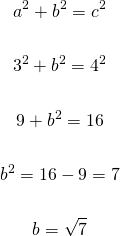
Use the area of the triangle formula now.

Practice Problems B
Find the area of a right angled triangle with a hypotenuse of 13 units and one of the legs being 12 units.
What is the area of a right triangle with a hypotenuse of 3 metres with a base length of 2 metres?
You are given an right isosceles triangle with the hypotenuse length of square root of 8 units. What is the area of this triangle?
Answers To Practice Problems B
30 square units
Area is the square root of 5 square metres.
Area is 2 square units.
